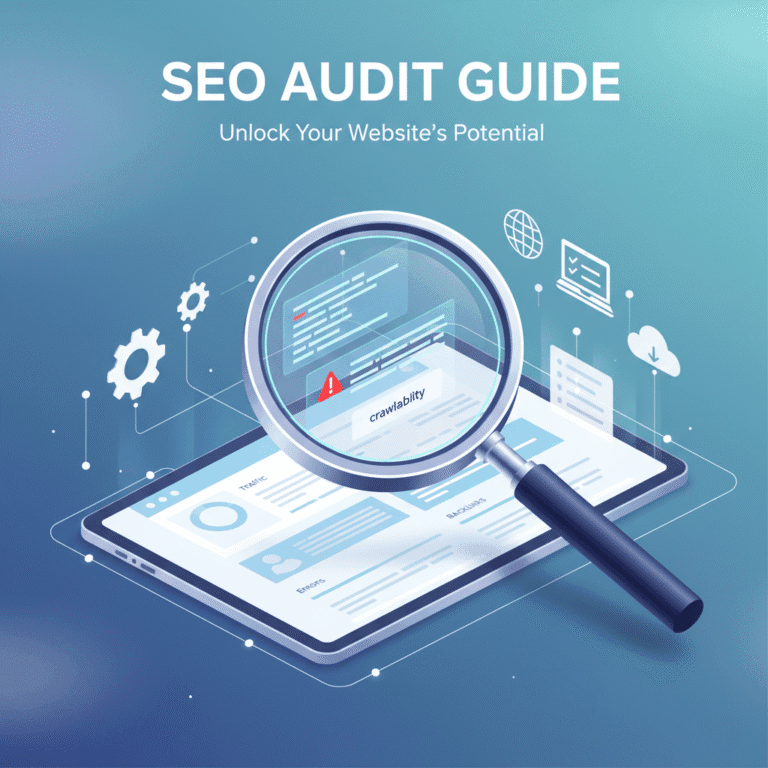Keyword Research for Contractors & Construction Companies (Complete Guide)
When people search for contractors or construction services, they don’t type “best business near me” — they type very specific terms like “roof repair contractor in Dallas” or “commercial construction company near me.”

If your website doesn’t show up for the phrases your ideal clients are using, you’re leaving money on the table. That’s why keyword research for contractors and construction companies is the foundation of every successful SEO strategy.
In this guide, I’ll break down how to find the right contractor SEO keywords and construction company SEO keywords so you can attract qualified leads, rank higher on Google, and grow your business.
Why Keyword Research Matters for Contractors & Construction Companies
Contractors often rely on referrals, word-of-mouth, or paid ads to get new jobs. While those methods work, they’re inconsistent and expensive.
Keyword research changes that. By understanding what potential clients search for, you can:
- Show up where it matters (Google searches in your city or service area).
- Build trust (people trust the companies they find organically).
- Generate steady leads without spending thousands on ads every month.
Simply put: if you want long-term visibility, contractor keyword research is non-negotiable.
Types of Keywords Contractors Should Target
Not all keywords are created equal. Let’s break down the main categories you’ll want to include in your SEO plan.
1. Service-Based Keywords
These are the bread and butter of your business.
Examples:
- “roofing contractor in Chicago”
- “commercial construction company Dallas”
- “bathroom remodel contractor near me”
2. Location Keywords
Construction is highly local, so combining services with locations is key.
Examples:
- “general contractor Austin TX”
- “home addition contractor Orlando”
- “construction company near me”
3. Problem-Solving Keywords
These target customers before they’re ready to hire.
Examples:
- “how much does a kitchen remodel cost”
- “foundation repair signs”
- “best siding for cold climates”
4. Long-Tail Keywords
These are more specific and less competitive.
Examples:
- “affordable deck builder in Denver”
- “licensed roofing contractor for insurance claim”
- “eco-friendly construction company Miami”
Step-by-Step: How to Do Keyword Research for Contractors
Here’s a simple process I recommend to my contractor and construction clients.
Step 1: Brainstorm Core Services
Start with the basics — roofing, remodeling, additions, siding, HVAC, plumbing, etc. Write them down as your “seed keywords.”
Step 2: Add Location Modifiers
Since most clients hire locally, pair each service with your city or region.
Example:
- Roofing → “roofing contractor Dallas”
- Remodeling → “kitchen remodeler Atlanta”
Step 3: Use Keyword Tools
Free and paid tools can help you expand your list. A few useful ones:
- Google Autocomplete & People Also Ask → see what people are typing in.
- Ubersuggest / Ahrefs / SEMrush → track search volume & difficulty.
- Microsoft Clarity → understand how visitors already interact with your site.
According to Google’s official guide on SEO, using a mix of keyword tools and user insights is the best way to build a strong SEO foundation.
Step 4: Check Competitors
Look up top competitors in your area and see what keywords they’re ranking for. Tools like Ahrefs or SEMrush make this easy.
Step 5: Group & Prioritize
Not all keywords are worth chasing. Prioritize ones that:
- Have local intent (“near me,” city names).
- Match your most profitable services.
- Show clear hiring intent (e.g., “hire general contractor” > “what does a contractor do”).
Example Contractor SEO Keywords
Here’s a sample list to give you ideas:
Roofing Contractors
- roofing contractor [city]
- roof repair contractor near me
- licensed roofing company [state]
Remodeling Contractors
- kitchen remodel contractor [city]
- bathroom remodel company near me
- home addition contractor [region]
General Construction
- commercial construction company [city]
- residential construction company [state]
- construction services near me
Common Mistakes in Contractor Keyword Research
- Going too broad. Ranking for “remodeling” alone won’t bring in leads — you’ll waste effort competing against Home Depot and Wikipedia.
- Ignoring local intent. Most of your clients live within 20–30 miles. Focus there first.
- Targeting keywords clients don’t use. You may say “residential construction,” but clients might be typing “home builders.”
- Not updating keywords. Search trends change. What worked two years ago may not work today.
Turning Keywords Into Clients
Finding the right construction company SEO keywords is step one. The real magic happens when you apply them to your:
- Service pages (optimize “Roof Repair Dallas” for your roofing page).
- Blog content (answer common client questions).
- Google Business Profile (add your main keywords into your description and services).
- Meta titles & headings (include location + service).
When done correctly, this helps your business show up in the exact searches your future clients are performing.
Keyword research for contractors and construction companies isn’t about chasing every possible phrase. It’s about choosing the right mix of service, local, and intent-based keywords that will bring in qualified leads.
Start with your core services, add your location, check competitor strategies, and then apply your keywords across your site.
Done consistently, this approach ensures that when someone searches for “reliable contractor near me” or “construction company in [city],” your business is the one they find first.
If you specialize in remodeling, check our dedicated guide for Keyword Research for Remodelers.
If you sell building materials, see our guide for Keyword Research for Building Material Companies.



